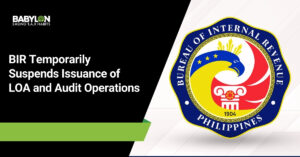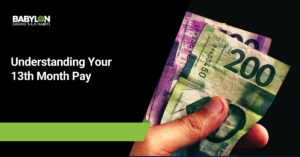Depreciation is an essential concept in accounting, allowing businesses to allocate the cost of their tangible assets over time. By understanding depreciation, you can more accurately assess the true value of assets and their impact on your financial statements.
In this article, we’ll cover the basics, various methods, how to compute depreciation, and some FAQs.
What is Depreciation?
In accounting, depreciation represents the gradual reduction in the value of a fixed asset over its useful life. Assets like machinery, buildings, and equipment wear down or become obsolete, and depreciation allows businesses to expense this decline in value systematically. This process not only spreads the cost of an asset over several years but also aligns it with the revenue the asset helps generate.
5 Types of Depreciation Methods
There are several ways to calculate depreciation. The method you choose depends on the asset type, the company’s financial strategy, and accounting standards. Here are the five most common depreciation methods:
Straight-Line Method
The Straight-Line Method is the simplest and most widely used. It spreads the cost of an asset evenly over its useful life. The annual depreciation expense is consistent, making this method easy to apply and ideal for assets that depreciate uniformly, like office furniture or buildings.
Formula:
Depreciation Expense= Cost of Asset−Salvage ValueUseful Life
where:
Cost of Asset: The initial purchase price or cost of the asset.
Salvage Value: The estimated residual value of the asset at the end of its useful life.
Useful Life: The expected number of years the asset will be used.
Declining Balance Method
The Declining Balance Method applies a higher depreciation rate in the asset’s early years, then gradually reduces the expense as the asset ages. This approach is beneficial for assets that quickly lose value, such as vehicles or electronic equipment.
Formula:
Depreciation Expense=Book Value at Beginning of Year×Depreciation Rate
where:
Depreciation Expense: The annual amount of depreciation to be recorded.
Book Value at Beginning of Year: The asset’s value at the start of the depreciation period, often the purchase cost initially and reduced by accumulated depreciation in subsequent years.
Depreciation Rate: The percentage rate of depreciation per year, typically set by the company or determined by accounting guidelines.
Double Declining Balance Method
The Double Declining Balance Method is a more accelerated version of the Declining Balance Method, doubling the rate used in straight-line depreciation. This method is often chosen for assets that lose a significant portion of their value quickly. Moreover, the Double Declining Balance Method results in higher depreciation in the early years, gradually decreasing over the asset’s life, with the final year adjusted to reach the salvage value.
Formula:
Depreciation Expense =2 x SLDP × Book Value at Beginning of Year
where:
Depreciation Expense: The annual amount of depreciation to be recorded.
SLDP: Straight-Line Depreciation Percentage, calculated as 1Useful Life
Book Value at Beginning of Year: The asset’s value at the start of the depreciation period, adjusted each year for accumulated depreciation.
So, the formula could also be expanded as:
Depreciation Expense =2 x 1Useful Life × Book Value at Beginning of Year
Sum-of-the-Years’ Digits Method
The Sum-of-the-Years’ Digits (SYD) Method also accelerates depreciation by weighting the asset’s early years with higher depreciation expenses. This method works well for assets that provide greater productivity at the beginning of their useful life.
Formula:
- Sum the years of the asset’s life. For example, a 5-year asset would be 5+4+3+2+1=15.
- Each digit is divided by the total sum to calculate the yearly depreciation percentage, beginning with the largest number in the first year.
Units of Production Method
The Units of Production Method ties depreciation to an asset’s actual usage. This method is ideal for assets with varying productivity rates, like manufacturing equipment. Moreover, the Units of Production method aligns depreciation with the actual usage of the asset, offering a more accurate reflection of its value over time based on production.
Formula:
Depreciation Expense=(Cost of Asset−Salvage ValueTotal Expected Production) x Units Produced
where:
Depreciation Expense: The depreciation for the period, based on usage.
Cost of Asset: The initial purchase price of the asset.
Salvage Value: The estimated value of the asset at the end of its useful life.
Total Expected Production: The total units expected to be produced or used over the asset’s lifetime.
Units Produced: The actual number of units produced during the period, tying depreciation directly to asset usage.
How to Compute for Depreciation + Examples
Let’s look at practical examples of how to compute depreciation using each method.
Straight-Line Method Example
For an asset costing $10,000 with a salvage value of $2,000 and a useful life of 5 years:
Depreciation Expense= Cost of Asset−Salvage ValueUseful Life
Depreciation Expense= 10,000-2,0005=1,600 per year
Declining Balance Example
If the depreciation rate is 20% and the asset’s book value is $10,000:
Depreciation Expense=Book Value at Beginning of Year×Depreciation Rate
Depreciation Expense=10,000×0.20=2,000 in the first year.
Double Declining Balance Example
For an asset with an initial cost of $10,000, a useful life of 5 years, and a salvage value of $1,000:
- Calculate the Straight-Line Depreciation Percentage (SLDP):
SLDP= 1Useful Life=15=20%
- Double the SLDP for DDB:
Depreciation Rate = 2× 20% = 40%
- Depreciate Each Year:
Year 1:
Depreciation Expense=40%×10,000=4,000
Book Value at End of Year 1: 10,000 – 4,000 = 6,000
Year 2:
Depreciation Expense=40%×6,000= 2,400
Book Value at End of Year 2: 6,000 -2,400 = 3,600
Year 3:
Depreciation Expense=40%×2,400=3,600
Book Value at End of Year 3: 3,600 – 1,440 = 2,160
Year 4:
Depreciation Expense=40%×2,160= 864
Book Value at End of Year 4: 2,160 – 864 = 1,296
Year 5:
Depreciation Expense=40%×1,296=296
Book Value at End of Year 5: 1,296 – 296 = 1,000 (reaches salvage value)
Sum-of-the-Years’ Digits Method
For an asset with a useful life of 5 years and a depreciable amount of $8,000:
Year 1: 5/15 = 33%
Year 2: 4/15 = 27%
Year 3: 3/15 = 20%
Year 4: 2/15 = 13%
Year 5: 1/15 = 7%
The percentages across all these years must total 100%.
Units of Production Method Example
For an asset with an initial cost of $10,000, a salvage value of $2,000, and an expected total production capacity of 100,000 units over its useful life.
- Calculate Depreciation Rate per Unit:
- Depreciable Amount: Cost of Asset−Salvage Value=10,000−2,000=8,000
- Depreciation Rate per Unit: Depreciable AmountTotal Expected Production = 8,000100,000=0.08 per unit
- Compute Depreciation Based on Units Produced Each Year:
Year 1: If 20,000 units were produced:
Depreciation Expense=20,000×0.08=1,600
Book Value at End of Year 1: 10,000 – 1,600 = 8,400
Year 2: If 25,000 units were produced:
Depreciation Expense=25,000×0.08=2,000
Book Value at End of Year 2: 8,400 – 1,600 = 6,400
Year 3: If 30,000 units were produced:
Depreciation Expense=30,000×0.08=2,400
Book Value at End of Year 3: 6,400 – 2,400 = 4,000
Year 4: If 15,000 units were produced:
Depreciation Expense=15,000×0.08=1,200
Book Value at End of Year 4: 4,000 – 1,200 = 2,800
Year 5: If 15,000 units were produced:
Depreciation Expense=10,000×0.08=800Book Value at End of Year 5: 2,800 – 800 = 2,000 (reaches salvage value)
What Qualifies as Depreciating Assets?
Depreciating assets generally include any tangible property used for business operations that has a limited useful life. This excludes land, which doesn’t depreciate as it typically doesn’t lose value over time. Common depreciating assets include:
- Machinery and equipment
- Vehicles
- Office furniture
- Buildings and structures (excluding land)
- Computers and software
Under Depreciated vs. Over Depreciated Assets
Understanding whether an asset is under or over-depreciated is essential for accurate financial reporting.
An under-depreciated asset occurs when its accumulated depreciation is less than its actual wear and tear, often due to a low depreciation rate. This can cause the asset to appear more valuable on financial statements than it truly is.
Conversely, an over-depreciated asset happens when the recorded depreciation surpasses the asset’s actual loss in value. This situation may make the asset seem undervalued, which can reduce reported profits and potentially lower tax liabilities.
Depreciation FAQs
Why do we use depreciation in accounting?
Depreciation provides a systematic way to spread out the cost of an asset over its useful life. It aligns the asset’s expense with the revenue it generates, creating a more accurate representation of profits over time. This also helps prevent businesses from experiencing a sudden, large expense the year they buy the asset.
Why do assets depreciate over time?
Assets depreciate due to wear and tear, obsolescence, or other factors that reduce their productive value. Depreciation acknowledges that assets have a finite useful life and will eventually need replacement or significant repairs.
Is depreciation an expense or income?
Depreciation is considered an expense on the income statement. It reduces taxable income, helping companies offset the cost of their assets gradually rather than all at once. Although it doesn’t represent an actual cash outflow, it still affects net income and, ultimately, tax obligations.
What is depreciation recapture?
Depreciation recapture occurs when an asset is sold for more than its depreciated value, resulting in a taxable gain. This process recoups the tax benefits a business enjoyed from depreciation over the asset’s life, treating part of the sale proceeds as ordinary income rather than capital gains.
Maximize Your Financial Strategy with Babylon2k
Managing depreciation and maximizing tax deductions can be complex without expert guidance.
Babylon2k offers reliable accounting services to help you handle depreciation accurately and unlock potential tax deductions for your business. Our team is dedicated to making complex financial processes more accessible, so you can concentrate on growing your business with confidence.
Take the next step in optimizing your financial strategy. Request a quote today and let’s make your finances work smarter for you.
For more inquiries, message our AI chatbot, email us at [email protected], or contact us via Viber/WhatsApp at +63-927-945-3382.






